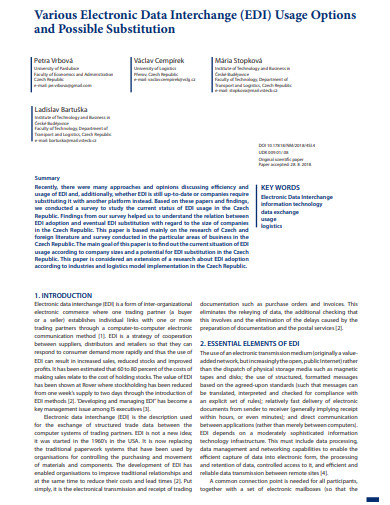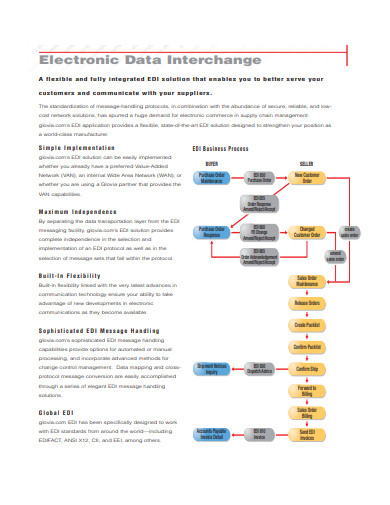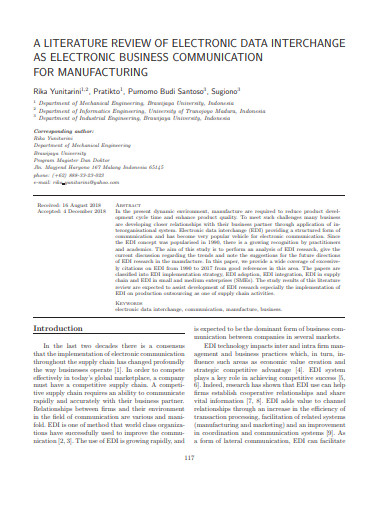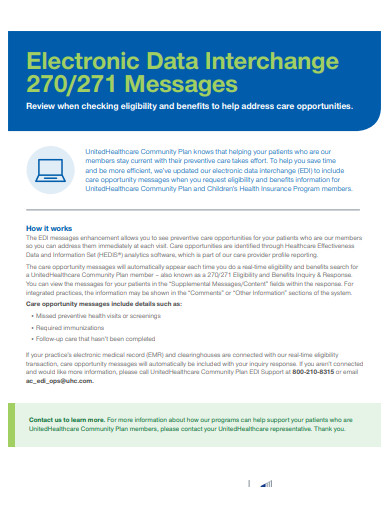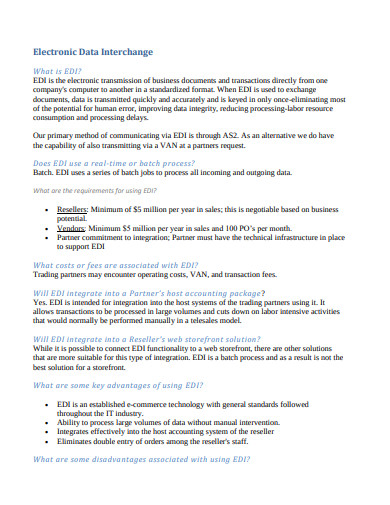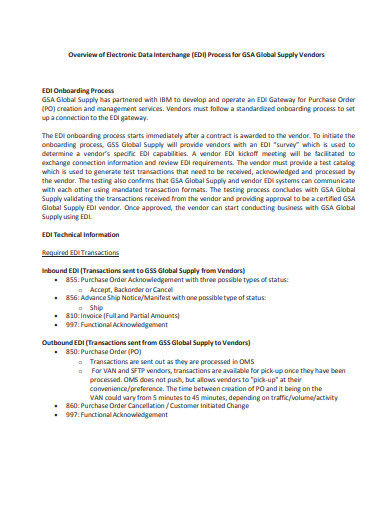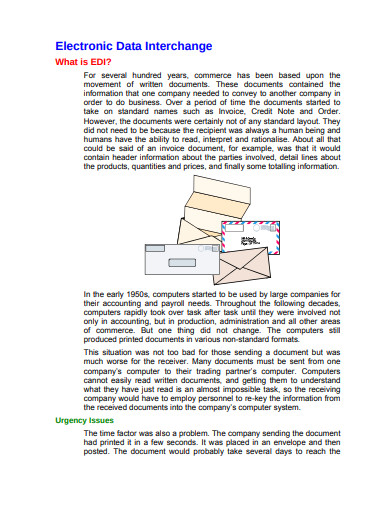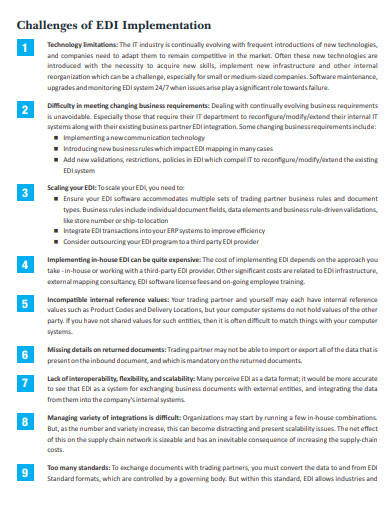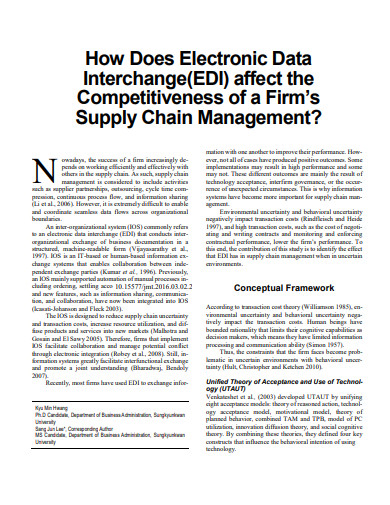10+ Electronic Data Interchange Examples to Download
Electronic data interchange (EDI) refers to the electronic technology-facilitated communication process between businesses that traditionally used to be done in papers. Such an information exchange process communicates details of orders, invoices, bills, etc. EDI has been confined under a technical set of standards that facilitates the transaction of instruments or the communication without any special arrangement requirements.
What is EDI Standards?
EDI process refers to the era of going ‘paperless’. It is a technical way of business communication process conversion between the two parties involved. The process of EDI is confined under several standards of electronic communication. EDI is set up following the methodologies that the sender and the recipient agree on. It mainly follows four major EDI standards:
1. Recommended by the UN, the only international standard that is predominant outside North America is UN/EDIFACT.
2. The predominant standard in North America is the US standard ANSI ASC X12 (X12)
3. The predominant standard in the UK retail industries is the TRADACOMS standard developed by ANA (Article Number Association)
4. European automotive industries use the ODETTE standard.
What is the Difference between Traditional Document Exchange and EDI?
1. The process of communication in traditional document exchange (TDE) channel takes much time like days. Whereas in EDI the information can be transacted within less than an hour.
2. In traditional documentations buying decisions are often followed by creating the purchase order nad printing it and going physically. Whereas in EDI the process of printing and physical visits is not that important.
3. The purchase order can be emailed to the supplier in the traditional process. In EDI the software itself creates am electronic purchase order version and transmits it to the supplier automatically.
4. In traditional system purchase, the order is received and recorded in order entry system by the supplier. Whereas this process is automatically done without any human intermission in EDI. The order entry system itself receives and updates it on the receipt.
5. The buyer and the supplier communicate to confirm and acknowledge the purchase order in the traditional exchange system. Opposing that in EDI the acknowledgment is created in the order system of the supplier and transmits it back to make the recipient confirm about it.
What are the Advantages of EDI?
The EDI due to its convenient process an system has offered several benefits and advantages to the businesses in their operations. Like:
1. The EDI system is faster and transparent that helps to saves time and improves the customer service process.
2. It helps to reduce the cost of the operations by minimizing the use of paper and storage facilities and improved inventory management.
3. It calculates accurately and improves business relationships by having quality works and coordinated processes.
4. Since it reduces costs and increases turnovers, it impacts and improves the cash flow.
5. The operations in the EDI system are simpler and helps in increasing productivity.
6. The EDI process has high adaptability and high data quality that rarely ever requires any manual intervention.
What are the different EDI System Components?
1. It makes use of Web-based tools that are required to translate the accounting information in the format suitable for EDI.
2. In this system, the buyer and the customer’s accounts are synced.
3. Transactions are sent and received between the sender and the receiver by the transaction network.
4. The current operational EDI support and maintenance services.
10+ Electronic Data Interchange Examples
1. Various Electronic Data Interchange
If you are working in the documentation you know how electronic data interchange benefits have changed the operations. With technology advancement, such mechanisms have really increased the pace of work and productivity. The minutely framed document on the EDI system can enlighten more on how it operates. Have a look at it and if it looks useful to you grab it today!
2. Electronic Data Interchange
Isn’t the electronic data interchange system has changes your life and reduce work pressure? The automated process of EDI is a minute and precise knowledge is all that you need to know for practicing its operation and simplify your work. Thus if you want to let your employees too use this system the mentioned template wuld be the mos helpful example for them. Check it out and grab it now!
3. Literature Review of Electronic Data Interchange
The new technology of EDI is a subject matter of many scholar and researchers. If you are looking forward for a fine review work on the technology, this example template should be your options. The descriptions framed in the template focses on both its merits and demerits and offers a balanced review. So try the template out today and have it if it helps your requirement.



